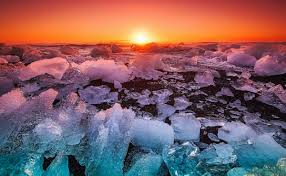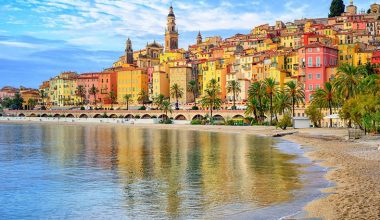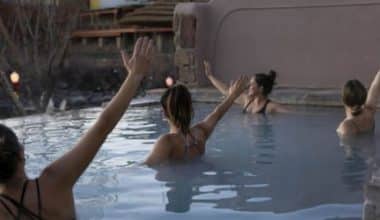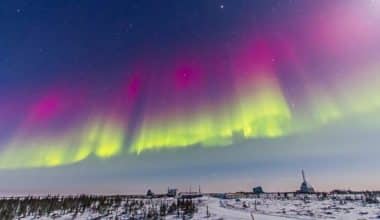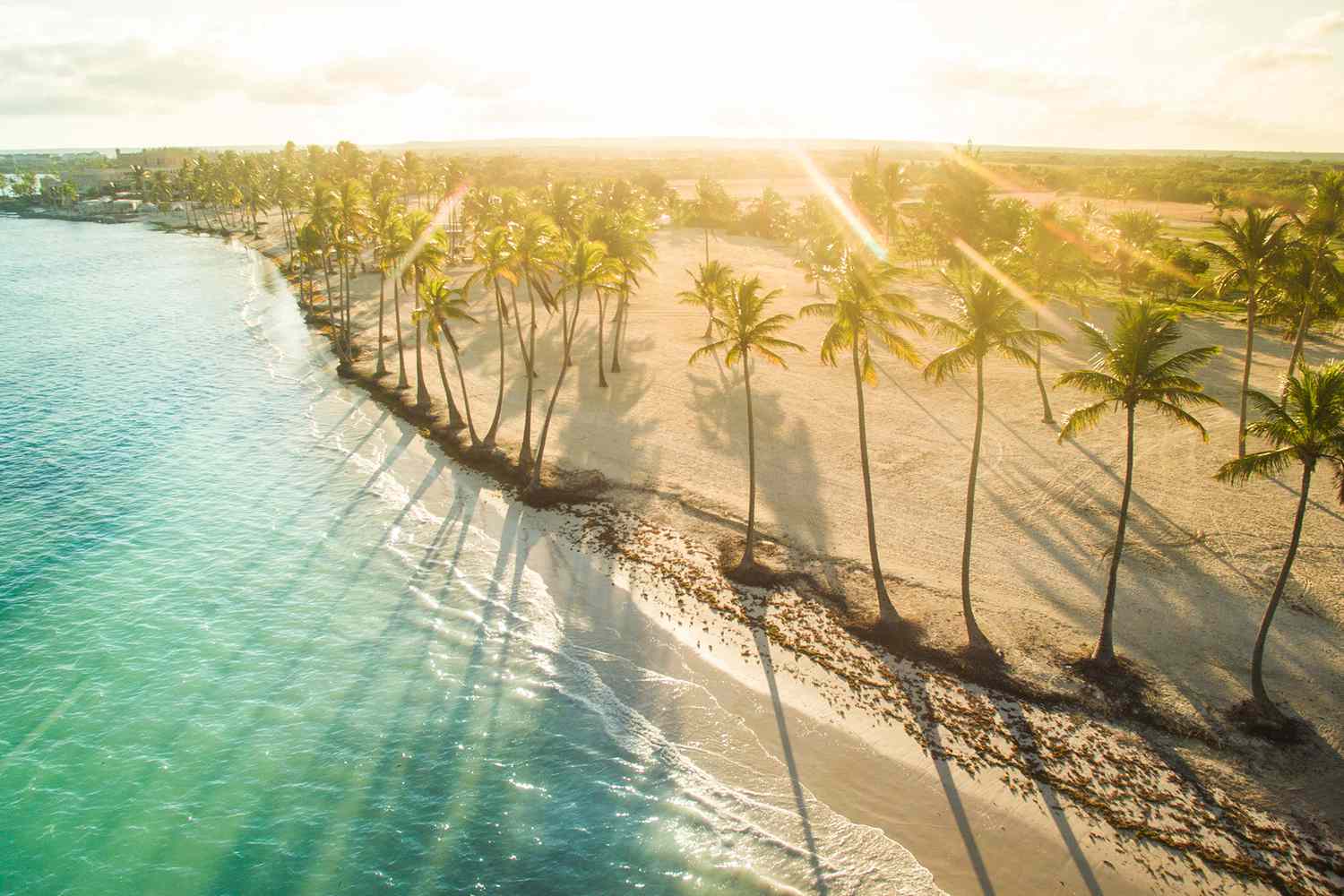The stunning beauty of Iceland attracts sightseers from all over the world who come to marvel at the country’s many natural wonders. Travellers flock to Iceland in the summer to take advantage of the long days by hitting the road, trails, or clubs, while the colder months bring opportunities for arctic exploration, such as gazing at the northern lights or soaking in a geothermal pool like the world-famous Blue Lagoon (or a less well-known one). So, when is the best time to visit Iceland?
Let’s find out…
When Is the Best Time to Visit Iceland?
The Best Time to Visit Iceland in Terms of Weather
Iceland is a popular tourist destination during the summer months of July and August when temperatures range from 50 to 55 degrees Fahrenheit. And, with 24 hours of daylight, June attracts nearly as many tourists as the height of summer. However, rain and strong winds are not uncommon even during this season. Because of the island’s volatile climate, you can often experience all four seasons in a single day.
Planning a visit in September can be ideal. And because Iceland can stay relatively warm until the first week of October, May also has plenty of daylight for sightseeing and warmer temperatures. However, if you want to explore some of the more remote hills and fjords, this may not be the best time to go, as some roads remain closed as they thaw from the winter’s snowy cover.
The best time to visit Iceland for serious hikers is during the summer when all of the mountain roads and famous trails are open and accessible.
The Best Time to Go Whale Watching in Iceland
The best months to go whale watching in Iceland, according to Icelandic marine biologist Edda Elsabet Magnsdóttir, are June and July. Northern Iceland has a longer season for seeing humpbacks, minkes, and dolphins, which ply the Atlantic from May to August; a few humpbacks even stay until the end of the year. Blue whales also pass through in the summer.
During the summer, there are more minke whales and dolphins in Reykjavik, while orcas congregate in West Iceland along the Snaefellsnes peninsula during the first half of the year.
The Best Time for Visiting Iceland’s Hot Springs
Iceland’s hot springs are an important part of the local culture, providing both social and wellness benefits. The public pools in Reykjavik are open all year (and especially refreshing in the dead of winter), but the island also has hundreds of hidden “hot pots” that tap directly into the geothermal activity beneath its lava-ridden surface.
Sigurdur Bjarni Sveinsson, expert Icelandic mountaineer and cofounder of Midgard Adventure, advises hot water seekers to “check them out during the month of September or, even better, the first half of October, when they’re all still accessible by mountain road.”
The best time to visit the Blue Lagoon, the world’s most famous geothermal spa, is during the off-and-shoulder seasons when crowds are thinner.
When Is the Best Time to Visit Iceland to See the Northern Lights?
The best time to see the northern lights is from October to April.
Mountain roads are closed during the winter, and some minor roads are closed due to weather conditions. However, there are numerous winter activities available, such as skiing, snowshoeing, and visiting ice caves. There are brief periods of daylight, but long nights promise spectacular natural light displays – keep an eye on the weather forecast to maximize your chances of seeing the northern lights. New Year’s Eve in Reykjavik is becoming a popular tourist attraction, but keep in mind that some hotels close between Christmas and New Year.
Best Time to Visit Iceland (Months)
January
This is the coldest month of the year. By this time, the ski season is usually well underway. However, the temperatures are not unbearable, with daytime averages of -1° C (30° F). You may encounter fairly strong winds at times, making these temperatures feel even colder.
The average amount of sunlight in January is only 4 hours, but this increases to nearly 7 hours by the end of the month. And if seeing the Aurora Borealis is on your bucket list, you’re in luck because this is the best time to visit Iceland to see the dancing lights.
February
The number of daylight hours in February ranges from 7 to 10, with average temperatures of 0° C (30° F). This allows for ample exploration of the incredible scenery, and most attractions in the southwest part of the country are open for business – unless there is a major snowstorm.
The month of February is ideal for skiing. This is also a good month to see the Northern Lights; however, for the best viewing, choose an evening with no precipitation and no cloud cover.
March
As the days lengthen, the number of hours of sunlight available for exploration increases from 10 to 13.5. However, average temperatures remain cold, rising only slightly to 0.3° C (33° F). During March, about half of the days have precipitation, which can be rain or snow, depending on elevation.
This is the peak of ski season, though it begins to wane by the end of the month. To get to the more remote areas, you will still need a 4-wheel drive vehicle. On clear nights, this is also an excellent month for seeing the Northern Lights.
April
The country really begins to “heat up” in April, and ski season is usually over by mid-April. The average daytime temperature is 2.8 degrees Celsius (37 degrees Fahrenheit). The country is experiencing drier weather at this time of year.
However, with the clear skies comes the end of the Northern Lights viewing season. They may not be as spectacular as they were in the winter, but they are still present in April. The duration of daylight is 16 hours.
May
With long stretches of daylight lasting about 18 hours per day, you can probably guess that this is not the best time to see the Aurora Borealis. However, average daytime temperatures of 6.3° C (48° F) and fewer tourists are available.
While it is still cold outside, the good news is that there are many more sunny days ahead of you.
June
June has the longest day of the year in the Northern Hemisphere, and here it is 22 hours, the month of the midnight sun! Temperatures are also rising, with average daytime highs reaching 8.9° C (48° F) or higher on sunny days. This means that there will be less wind and rain and more sunshine.
The interior roads are typically open in late June. The waterfalls are still flowing. The number of visitors begins to rise dramatically.
July
Summer in Iceland can be quite pleasant, with pleasant weather and long days averaging 19 hours of sunlight. The average daytime temperature is 10.7° C (52° F) – never too hot. There is a chance of light rain mixed in with the sunny weather.
By July, the 4-wheel drive roads into the interior will be open for business. This is peak season, and many lodging options will be fully booked. Restaurant reservations will be required.
August
This is the end of summer when the daylight hours shorten to about 16, but it is a great time to visit Iceland’s landmarks. The average daytime temperature is 10.3 degrees Celsius (50 degrees Fahrenheit), and the weather is dry. By the end of the month, there will be a noticeable chill in the air, but there will still be plenty of daylight for exploring.
Because the roads are still open, this is the best time to visit the remote interior. Many locals go camping at the beginning of the month. This month, the number of visitors is at an all-time high.
September
With the arrival of autumn, September sees approximately 13 hours of daylight and daytime temperatures of 7.5° C (46° F). Toward the end of the month, the season for good Northern Lights viewing begins to heat up. There are also fewer sunny days.
Some of the four-wheel drive roads in the interior will close for the winter by mid-September. It is possible that snow will fall in the interior or at higher elevations.
October
In October, the number of daylight hours decreases significantly to around 9, with average daytime temperatures hovering around 4.3° C (40° F) and spectacular autumn colours. Even though precipitation increases during this period, clear skies increase the likelihood of seeing the Aurora Borealis after the sun sets.
While the weather is still pleasant, there are far fewer people. This is a good “shoulder season” month with nice weather and fewer people.
November
Temperatures drop to a bone-chilling 1.3° C (35° F) this time of year. Now, only 6 hours of average daylight are available, but despite the short days, this is prime Northern Lights viewing season. Many days will see light rain or snow, as well as fog.
December
Apart from January, this is the darkest month of the year, with only about 4 hours of daylight to play with. The ski season typically begins in mid-December (or early January). In early December, the Blue Lagoon has the fewest visitors. The average daytime temperature is -0.1° C (31° F).
On the other hand, when it isn’t snowing or raining, this is prime viewing territory for the Northern Lights.
The Best Time to Visit Iceland Based on Activity
Not all activities are available all of the time here. You may need to change your travel plans depending on what you want to do. Here’s when to visit Iceland based on popular activities.
Winter is the best season to visit Iceland to see the Northern Lights.
The Northern Lights
Because of its remote location away from any city light pollution (except Reykjavik), this is one of the best places on the planet to see the Northern Lights. The Northern Lights season runs from late September to mid-April, but certain conditions must be met in order to get the best view. The sky must be clear, and solar flares on the sun’s surface must occur in order for the dancing lights to appear.
Caves of Ice
Temperatures are at their lowest from about mid-November to about mid-March. This is the best time to visit the breathtaking ice caves. Because of the numerous glaciers and volcanoes, this area is ideal for the formation of ice caves. You can go inside the glaciers on an ice cave tour, also known as the Crystal Caves. Because most ice caves are located within glaciers, visiting them during the summer months is generally not advised.
In late spring or early summer, visit the Svartifoss waterfall.
Waterfalls
Waterfalls are synonymous with water, so the best time to see them is from late April to June (when there is the most rain) or anytime during the Spring-Summer months after heavy rain. There will also be fewer people during this time.
Weather
Come to Iceland during the high season of July and August for the most pleasant mild weather. Even though there isn’t as much daylight as in June, the days are still long, with the most sunshine and opportunities to explore the stunning landscape and all of the island’s attractions.
Spending Less
Travel during the low season, which runs from late October to early December, and then again from mid-January to March, to save money. Avoid the holiday season because prices skyrocket. If you prefer warmer weather, the shoulder season is ideal: mid-May through mid-June and September through mid-October.
Keeping Away from Crowds
If you prefer your visit to be relatively uncrowded, the best months to plan your trip are March, April, May, and September. Many people believe that the best time to visit is during the shoulder seasons of spring and fall.
When Is the Worst Time to Visit Iceland?
There is no bad time to visit Iceland because of the country’s abundance of stunning landscapes and seasonal natural phenomena. Those looking for the Northern Lights visit the country during the darker winter months, while those looking for more daylight visit during the summer. Of course, visitors to Iceland in the spring and fall can enjoy more moderate weather and daylight, so the best time to visit Iceland depends on what you want to see and do during your trip.
However, if you want to avoid the crowds, the warmest months of the year are by far the worst time to visit. The months of July and August see the most visitors, with popular attractions such as the Blue Lagoon, Golden Circle, South Coast, and Jökulsárlón, especially crowded. If you plan to visit during that time, consider visiting more remote parts of the island, such as Westfjords or East Iceland, which have their own cache of fjords, vistas, and waterfalls that are just as impressive — if not more — than the natural attractions surrounding the capital.
When Is the Best Time to Visit Iceland?
Getting to Iceland is relatively inexpensive, especially when compared to other European destinations. Flight deals to Iceland are frequently found by travellers from the United States and Europe — keep an eye out for sales on Icelandair and low-cost airlines Play to save even more on your trip. Accommodations, tours, attractions, and meals can be expensive all year, but you may be able to save money by visiting during the off-season, which is typically late fall to early spring, excluding December. Summer is typically the most crowded and expensive season to visit.
Related Articles
- ARE THERE GROCERY STORES OPEN ON CHRISTMAS DAY?
- Student Finance: Grants, Loans, Applications (+ How to Start Guide)
- CAPITAL CONTROLS: BEST PRACTICES WITH PRACTICAL EXAMPLES
- TOP SAFEST COUNTRIES in the World in 2023
- Best Places to Travel in December for Warm Weather
